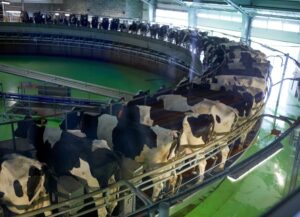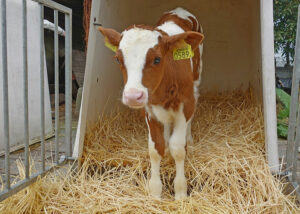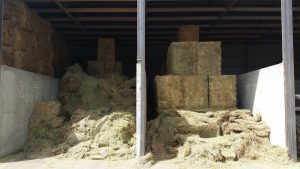Lucas Pantaleon
Mycobacterium avium subspecies paratuberculosis (MAP) is the causative agent of paratuberculosis or Johne’s disease (JD) in ruminants, causing a chronic progressive enteritis. Young calves are the most susceptible group to infection. JD spreads within the herd both vertically and horizontally, it characterizes by a slow spread and prolonged incubation period. The disease has a negative impact on dairy farms because daily milk yield and basic milk components (protein and total fat solids) are reduced.
Diagnosis is difficult due to the often-sub-clinical presentation, lack of characteristic clinical signs, prolonged incubation period and variable diagnostic test sensitivity and specificity. Choosing the correct diagnostic method for the herd is challenging. Serological tests are quick, low cost and allow testing of individual animals or the herd, thus despite its variability in sensitivity they play a role in controlling the disease.
Studies showed that the prevalence of JD in herds ranged from 20 % to 40 %. It is important to consider that milk from infected animals can be a source of human infection as MAP has been confirmed in some human patients with some chronic diseases.
Researchers in Poland set to investigate the effects of JD on the productivity of dairy farms (A and B) in two naturally infected herds with different seroprevalence of the disease. Blood samples for serological testing and milk samples for milk components analysis, were obtained from all cows older than 18 months of age.
Seroprevalence varied between the two herds studied as well as between groups of lactation. A higher JD seroprevalence was found in herd B, this was correlated with lower milk yields of seropositive animals. Interestingly in the second herd (herd A) with lower seroprevalence, higher milk yields were seen in seropositive cows. As other studies had shown, the correlation between serologic status and milk yields is not always clear. In this study, researchers found that there was no relationship between length of gestation, immune status of cows against JD and milk yields in the herd.
The study found differences in milk components during individual lactation periods and between seropositive and seronegative cows. However, trends were not clearly seen. Seropositive cows in herd A exhibited a decrease in fat and protein content in the milk. On the contrary seropositive cows in herd B, showed no statistically significant higher fat and protein milk concentrations. When comparing minimum and maximum performance values and the content of the individual milk components from seropositive and seronegative cows, researchers observed that infected cows had maximum values that were much lower compared to maximum values of not infected cows, this finding was true for both herds.
Studies had suggested that the presence of antibodies can cause both a decrease and increase in milk yield and milk composition. The reason behind this was suggested to be related to different stages of disease in individual cows, genetics and the efficiency of the immune system. In the study discussed here, milk yields depended on the level of seroprevalence in a given herd. In the herd with a lower seroprevalence, an increase in milk yield was seen in seropositive cows, while the milk yield decreased in the herd with a higher seroprevalence. Therefore, as others demonstrated, the decrease in milk yields and percentage of protein content are related to within herd prevalence.
First lactation cows yielded the highest seroprevalence. Older cows, greater than 3 lactations, showed the highest drop in milk yields and basic milk components.
It is important for dairy farmers to implement herd control programs against JD because this disease results in negative economic impacts for the farm. Failure to control results in spread of the JD among the herd, hence raising its seroprevalence, leading to lower milk yields. The costs associated with JD in the herd stem from the costs of testing and earlier removal of infected cows.
Reference
Wiszniewska, L.A., Liedtke, K.G., Szteyn, J.M. 2020. The effect of mycobacterium avium subsp. paratuberculosis infection on the productivity of cows in two dairy herds with a low seroprevalence of paratuberculosis. Animals. 10 (490): 1-9
© 2020 Dairy Knowledge Center. All Rights Reserved.









